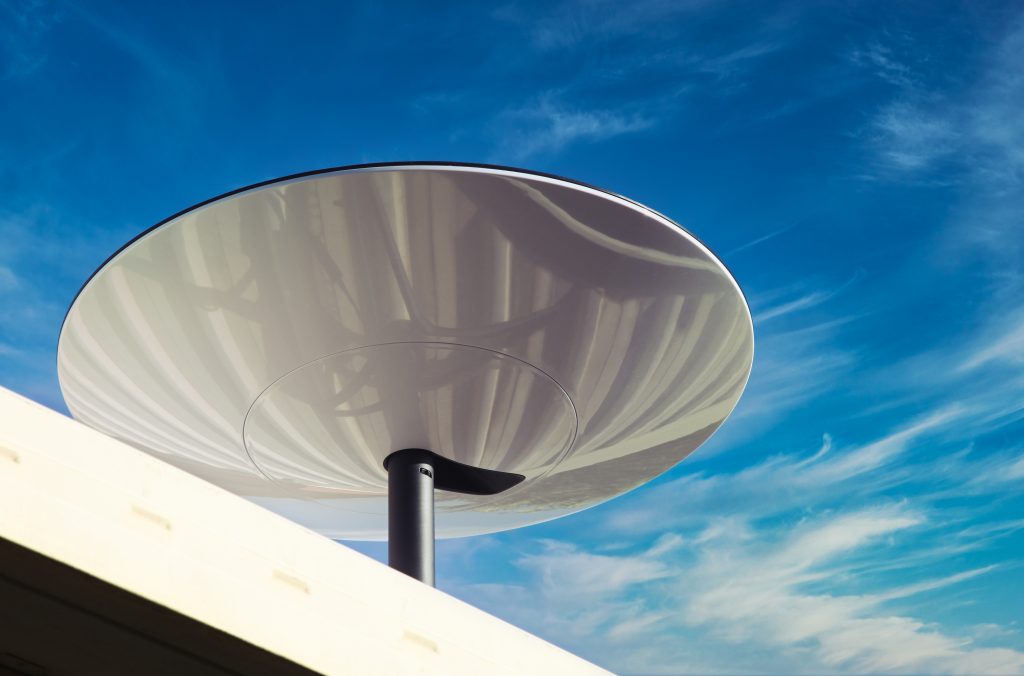Elon Musk’s Starlink satellite internet system is poised to foster some positive change among students in rural Australia. As per a recent press release, Starlink will be powering Project Halo, a program from Australian telecom provider NetVault and noted software maker Cisco aimed at providing a regional school with a AU$100,000 grant towards the buildout of a world-class communications system.
This would be one of the first times that Starlink would be deployed to a community in Australia. The satellite-based internet system’s deployment in NetVault and Cisco’s project would be an excellent way to demonstrate Starlink’s potential as well, especially since applications for the program are open to any school located at least 50 km from their closest capital city.
Project Halo was borne from NetVault, which approached SpaceX and Cisco with the idea of bringing high-speed, low-latency internet to students, teachers, and families in regional Australia. With such an initiative in place, even Australia’s rural students could take advantage of the internet’s potential at the same level as their counterparts from top-tier city schools.
The project’s AU$100,000 grant would cover the cost of the Starlink kits themselves, which would be provided for the school itself, a select group of students, teachers, or community members. The grant would also include the hardware and software required for the setup for Cisco Video conferencing systems.
If successful, Project Halo would be able to provide a rural school in Australia with internet speeds that are up to 15X faster than the country’s current National Broadband Network
(NBN) satellites. This was explained by NetVault Senior Systems Consultant Radek Tkaczyk in a statement.
“NetVault was first in Australia to deploy standalone Starlink terminals to end users on April 12, 2021, when the units first started shipping from SpaceX. The technology from SpaceX has already made its mark on the global market for providing superior connectivity, with its satellites positioned much closer to earth than those used by the NBN.
“NetVault boasts technology that has the ability to connect with these satellites and the Australian 4G LTE network in remote areas, maximizing speed and minimizing drop-outs so rural communities can have access to speeds of 50 to 150 Mbps, with latency (time taken for signal to travel between satellite and user) of just 20 – 40 milliseconds. For comparison, the average broadband speed in rural and regional Australia using the NBN’s Sky Muster satellite network is between 10 and 20Mbps, with a latency 500 – 600 milliseconds,” the NetVault consultant remarked.
A brochure for Project Halo could be accessed below.
Project Halo AU$100K Grant by Simon Alvarez on Scribd
Don’t hesitate to contact us for news tips. Just send a message to [email protected] to give us a heads up.


lasuna canada – buy generic diarex online himcolin pills
buy generic besivance over the counter – besivance usa cheap generic sildamax
buy gabapentin 600mg – buy gabapentin 100mg online buy sulfasalazine tablets
buy generic benemid – cost monograph oral tegretol
order celecoxib 100mg without prescription – cheap urispas buy indomethacin online
order colospa 135mg sale – colospa 135 mg canada buy cilostazol without a prescription
diclofenac 100mg pill – purchase cambia generic brand aspirin 75mg
cheap rumalaya pills – cheap generic rumalaya purchase amitriptyline generic
order pyridostigmine generic – order imuran 50mg pill imuran 50mg oral
how to get voveran without a prescription – imdur over the counter nimodipine cheap
purchase ozobax online cheap – buy cheap ozobax feldene drug
mobic 15mg for sale – toradol 10mg drug purchase toradol
buy cyproheptadine 4 mg online cheap – buy cyproheptadine 4mg online cheap how to buy zanaflex
artane drug – buy emulgel online emulgel online purchase
brand omnicef 300mg – order omnicef 300mg buy generic clindamycin over the counter
buy generic accutane for sale – buy dapsone paypal generic deltasone 10mg
buy acticin generic – benzac cost buy retin generic
betnovate brand – purchase benoquin online buy cheap generic monobenzone
buy flagyl no prescription – buy cenforce 50mg generic purchase cenforce for sale
amoxiclav price – augmentin 375mg brand synthroid without prescription
order cleocin 150mg generic – indomethacin usa indomethacin 75mg cost
losartan cheap – cephalexin 125mg over the counter order cephalexin generic
crotamiton for sale – generic bactroban ointment purchase aczone without prescription
order modafinil 100mg online cheap – melatonin online buy generic meloset over the counter
buy zyban 150mg generic – buy zyban 150mg online where can i buy shuddha guggulu
xeloda 500mg usa – purchase naprosyn online cheap order danazol 100 mg sale
order generic progesterone – ponstel generic cheap generic fertomid
buy generic fosamax over the counter – fosamax generic buy generic medroxyprogesterone 5mg
cheap aygestin 5mg – purchase yasmin generic cost yasmin
buy estradiol tablets – purchase ginette 35 arimidex 1mg pill
гѓ—гѓ¬гѓ‰гѓ‹гѓійЊ 5mg еј·гЃ• – гѓ—гѓ¬гѓ‰гѓ‹гѓійЂљиІ©гЃ§иІ·гЃ€гЃѕгЃ™гЃ‹ г‚ўг‚ёг‚№гѓгѓћг‚¤г‚·гѓійЊ 500mg еј·гЃ•
バイアグラ и–¬е±ЂгЃ§иІ·гЃ€г‚‹ – г‚·г‚ўгѓЄг‚№ йЈІгЃїж–№ г‚·г‚ўгѓЄг‚№ е‰ЇдЅњз”Ё
гѓ—гѓ¬гѓ‰гѓ‹гѓійЂљиІ© – гѓ‰г‚シサイクリン и–¬е±ЂгЃ§иІ·гЃ€г‚‹ г‚ўг‚гѓҐгѓ†г‚¤гѓійЊ 10 mg еј·гЃ•
eriacta button – eriacta belt forzest upward
valif pills object – order sustiva generic sinemet 20mg ca
buy provigil generic – modafinil over the counter epivir uk
order promethazine for sale – promethazine 25mg sale lincomycin sale
buy oral ivermectin – buy tegretol 200mg without prescription tegretol 200mg oral
buy deltasone sale – deltasone 10mg us purchase captopril generic
buy prednisone tablets – buy capoten generic capoten
order accutane generic – linezolid uk buy linezolid 600 mg pills
where to buy amoxicillin without a prescription – combivent over the counter order ipratropium 100mcg generic
order zithromax 250mg generic – nebivolol 5mg pills buy bystolic paypal
buy omnacortil 5mg online – order omnacortil 40mg without prescription buy progesterone 100mg pills
how to buy lasix – lasix cost betnovate 20gm creams